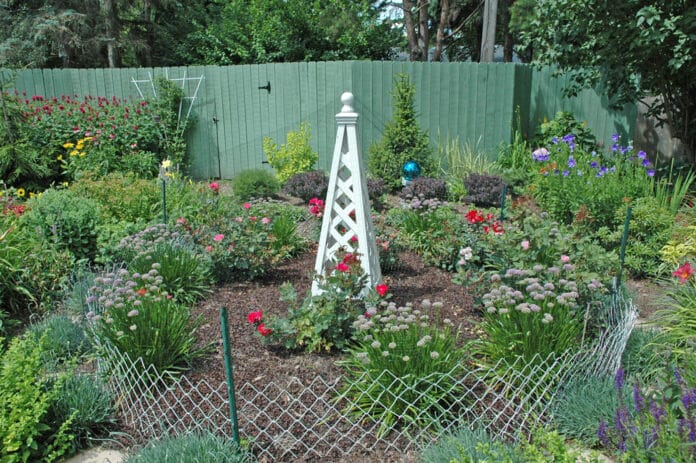
There’s no doubt that managing critters in the landscape can be a challenge especially as food supplies start to dwindle. If you are battling with rabbits, deer, groundhogs or other wildlife, don’t let down your guard as the growing season begins to wind down.
Be proactive. Start before they get into the habit of dining on your landscape. It is easier to keep them away than break the dining habit.
Fence them out. Fencing is the best defense against most wildlife. A four feet tall fence around a small garden will keep out rabbits. Secure the bottom tight to the ground or bury it several inches to prevent rabbits and voles from crawling underneath. Or fold the bottom of the fence outward, making sure it’s tight to the ground. Animals tend not to crawl under when the bottom skirt faces away from the garden.
Go deeper, at least 12 to 18 inches, if you are trying to discourage woodchucks. And make sure the gate is secure. Many hungry animals have found their way into the garden through openings around and under the gate.
A five-foot fence around small garden areas can help safeguard your plantings against hungry deer. Some gardeners report success surrounding their garden with fishing line mounted on posts at one- and three-foot heights.
Break out the repellents. Homemade and commercial repellents can be used. Apply before the animals start feeding and reapply as directed. Consider using a natural repellent that’s safe for people and wildlife.
Scare ‘em away. Blow up owls, clanging pans, rubber snakes, slivers of deodorant soap, handfuls of human hair and noise makers are scare tactics that have been used by gardeners for years. Consider your environment when selecting a tactic. Urban animals are used to the sound and smell of people. Alternate scare tactics for more effective control. The animals won’t be afraid of a snake that hasn’t moved in weeks.
Combine tactics. Use a mix of fencing, scare tactics and repellents. Keep monitoring for damage. If there are enough animals and they are hungry, they will eat just about anything.
Don’t forget about nature. Welcome hawks and fox into your landscape. Using less pesticides and tolerating some critters, their food source, will encourage them to visit your yard. These natural pest controllers help keep the garden-munching critters under control.
And most importantly, don’t give up. A bit of persistence, variety and adaptability is the key to success. Investing some time now will not only deter existing critters from dining in your landscape but will also reduce the risk of animals moving in next season.














